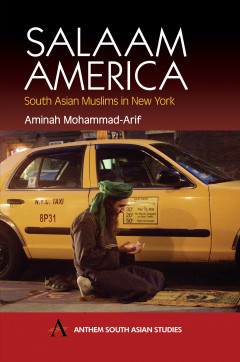Other Formats Available:
- About This Book
- Reviews
- Author Information
- Series
- Table of Contents
- Links
- Podcasts
About This Book
Although Islam and integration are frequently seen as antithetical concepts in much of Europe, the Muslims of the Indian sub-continent in the USA are an example of a population who have succeeded. This is in great measure due to their high levels of education and economic success, which make them one of the most prosperous minorities in America. Now brought into sharp focus by the events of 11 September 2001 in New York, this study examines the regrouping of the religious community and the reinvention of group identity in first and second-generation immigrants. By transplanting many of their institutions to the US (particularly in New York), Muslim immigrants succeeded in establishing their presence in the American landscape without arousing significant concern in the host community. This study emphasizes that in spite of the stereotypes attached to Islam – which are as loaded in America as in Europe, and periodically incite reactions from the Muslims – the religion of Islam can actually play a stabilizing role in the same way that other minority religions (notably Catholicism and Judaism and more recently Hinduism) have done, and that Islam does not seem to compromise the ability of immigrants to participate in American society.
Reviews
Author Information
Aminah Mohammad-Arif is currently a Research Fellow at the Centre d’Etudes de l’Inde et de l’Asie de Sud (CNRS/EHESS, Paris); she also teaches at the Institut des Langues et Civilisations Orientales.
Series
Anthem South Asian Studies
Table of Contents
Acknowledgements; Introduction; Part 1. From the Indian Subcontinent to America; Part 2. Adapting in context; Part 3. Redefining Islam; Part 4. Relationships with others; Conclusion; Appendices; Notes; Index
Links
Stay Updated
Information
Latest Tweets



